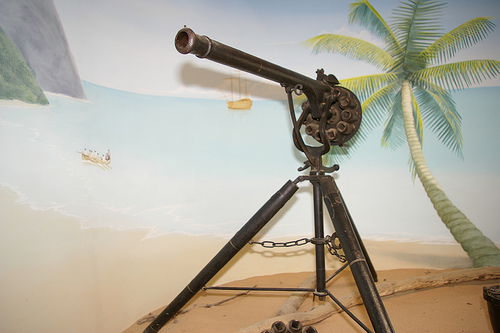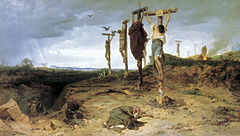 |
| L. Frank Bauam, 1911 |
L. Frank Baum Born, 1856
L. Frank Baum is best remembered for his iconic children's book, The Wonderful Wizard of Oz, but it was only one of the 14 Oz books he penned. He also wrote a host of other things, including a total of 55 novels, 82 short stories, more than 200 poems, and a number of scripts. Besides his own name, Baum published under several pseudonyms, including: John Estes Cook, Edith Van Dyne, Laura Bancroft, Schuyler Staunton, Floyd Akers, Suzanne Metcalf, and Captain John Fitzgerald.Baum was a sickly child, the seventh of nine children born to Benjamin and Cynthia Baum, wealthy Methodists from Chittenango, New York. He was home-schooled until the age of 12 and tended to be a daydreamer. In an effort to "toughen him up" his parents then sent him to the Peekskill Military Academy. He stayed there only two years, and then was allowed to return home, apparently following a minor heart attack.
Baum began writing early. His parents purchased a small printing press for him, and he and his brother soon started publishing The Rose Lawn Home Journal. (Rose Lawn was the name of the Baum estate.) By the time he was 17, he was the publisher of another journal, Baum's Complete Stamp Collector's Directory, reflecting one of his current interests.
By the age of 24, he had taken on the hobby of raising fancy chickens, and was putting out the monthly journal, The Poultry Record. A few years later he also published a book on his poultry specialty, the Hamburg chicken.
 |
| Glinda of Oz |
Baum loved children, and loved to tell them stories. It was his mother-in-law who first encouraged him to begin writing some of them down. In 1897 Baum published Mother Goose in Prose, which was moderately successful. Two years later he followed it with Father Goose, His Book, which became the best-selling children's book of the year. All this was merely leading up to his greatest success, The Wonderful Wizard of Oz, which was the best-selling children's book for the next two years.
Baum went on to write the 13 sequels to The Wonderful Wizard of Oz, the last of which, Glinda of Oz, was published posthumously. After his death the beloved series was continued by other authors, including Ruth Plumly Thompson, John R. Neill, Jack Snow, Rachel Cosgrove, and Eloise Javris McGraw and Lauren Lynn McGraw.
 |
| Reproduction of the Puckle Gun |
James Puckle Patents the Machine Gun, 1718
James Puckle was a London lawyer, inventor and writer. He called his invention the Defence Gun. It was a single-barreled flintlock mounted on a tripod, and had a revolving cylinder. He was intended for use on ships, to prevent unauthorized boarding. The gun could fire 63 shots in seven minutes, at a time when the best possible speed for a man loading and firing a musket was three shots per minute.There were two variations of the Defence Gun. One, which was intended for use against Christian enemies, fired the standard round bullets. The other type fired square bullets, for use against the Muslim Turks. It was considered that they would be more painful and destructive, and would be instrumental in encouraging the Turks to convert to the "True Faith."
Unfortunately for Pucker (and perhaps fortunately for the Turks), the gun never was mass produced. It was just too complicated, and too difficult for gunsmiths to make.
Spartacus's Followers Executed, 71 BC
 |
| The 6,000 survivors of the battle were crucified along the Appian Way. |
But Spartacus was a real person. He was the leader of an important slave uprising known as the Third Servile War. What had started out as a small band of 78 escaped gladiators grew into an army of over 120,000 men, women, and children. They were surprisingly effective and the Roman Republic was alarmed, to say the least.
No one today really knows what Spartacus was after. It's unlikely that he was really attempting to free all the slaves in the Roman Republic. The Greek historian, Plutarch, thought that he was just trying to escape to the north, and send his men back to their homes. The Roman authors Appian and Florius, on the other hand, thought that he intended to invade Rome itself. The best guess today is that there were probably factions within the movement, and Spartacus may have just been making it up as he went along.
The decisive battle took place in April of 71 BC. Spartacus's body was never actually found but it's believed that he died in battle. His 6,000 surviving troops were captured and crucified along the Appian Way between Rome and Capua.
No comments:
Post a Comment